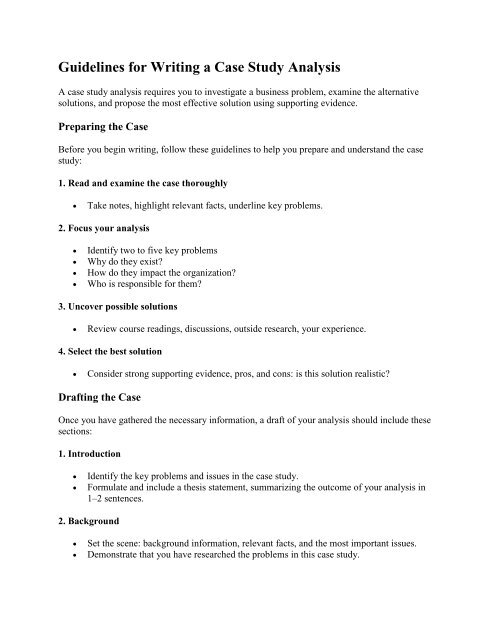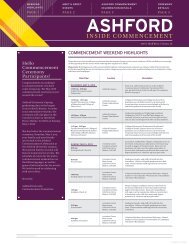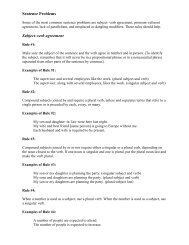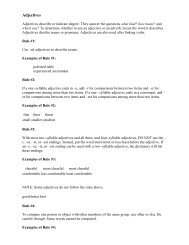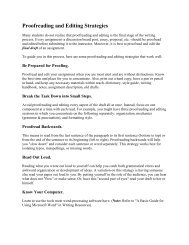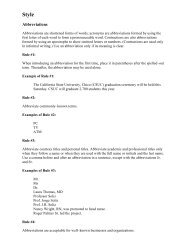Guidelines for Writing a Case Study Analysis - Ashford Writing
Guidelines for Writing a Case Study Analysis - Ashford Writing
Guidelines for Writing a Case Study Analysis - Ashford Writing
Create successful ePaper yourself
Turn your PDF publications into a flip-book with our unique Google optimized e-Paper software.
<strong>Guidelines</strong> <strong>for</strong> <strong>Writing</strong> a <strong>Case</strong> <strong>Study</strong> <strong>Analysis</strong><br />
A case study analysis requires you to investigate a business problem, examine the alternative<br />
solutions, and propose the most effective solution using supporting evidence.<br />
Preparing the <strong>Case</strong><br />
Be<strong>for</strong>e you begin writing, follow these guidelines to help you prepare and understand the case<br />
study:<br />
1. Read and examine the case thoroughly<br />
• Take notes, highlight relevant facts, underline key problems.<br />
2. Focus your analysis<br />
• Identify two to five key problems<br />
• Why do they exist<br />
• How do they impact the organization<br />
• Who is responsible <strong>for</strong> them<br />
3. Uncover possible solutions<br />
• Review course readings, discussions, outside research, your experience.<br />
4. Select the best solution<br />
• Consider strong supporting evidence, pros, and cons: is this solution realistic<br />
Drafting the <strong>Case</strong><br />
Once you have gathered the necessary in<strong>for</strong>mation, a draft of your analysis should include these<br />
sections:<br />
1. Introduction<br />
• Identify the key problems and issues in the case study.<br />
• Formulate and include a thesis statement, summarizing the outcome of your analysis in<br />
1–2 sentences.<br />
2. Background<br />
• Set the scene: background in<strong>for</strong>mation, relevant facts, and the most important issues.<br />
• Demonstrate that you have researched the problems in this case study.
3. Alternatives<br />
• Outline possible alternatives (not necessarily all of them)<br />
• Explain why alternatives were rejected<br />
• Constraints/reasons<br />
• Why are alternatives not possible at this time<br />
4. Proposed Solution<br />
• Provide one specific and realistic solution<br />
• Explain why this solution was chosen<br />
• Support this solution with solid evidence<br />
• Concepts from class (text readings, discussions, lectures)<br />
• Outside research<br />
• Personal experience (anecdotes)<br />
5. Recommendations<br />
• Determine and discuss specific strategies <strong>for</strong> accomplishing the proposed solution.<br />
• If applicable, recommend further action to resolve some of the issues<br />
• What should be done and who should do it<br />
Finalizing the <strong>Case</strong><br />
After you have composed the first draft of your case study analysis, read through it to check <strong>for</strong><br />
any gaps or inconsistencies in content or structure: Is your thesis statement clear and direct<br />
Have you provided solid evidence Is any component from the analysis missing<br />
When you make the necessary revisions, proofread and edit your analysis be<strong>for</strong>e submitting the<br />
final draft. (Refer to Proofreading and Editing Strategies and 20 Common <strong>Writing</strong> Errors to<br />
guide you at this stage.)


